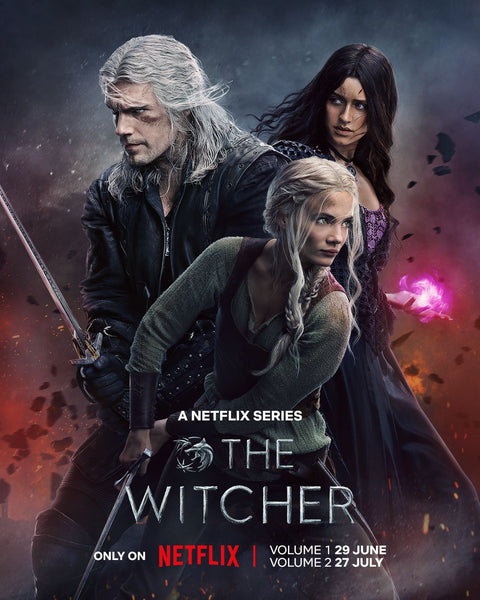Arrows vs Armour – Agincourt Myth Busting
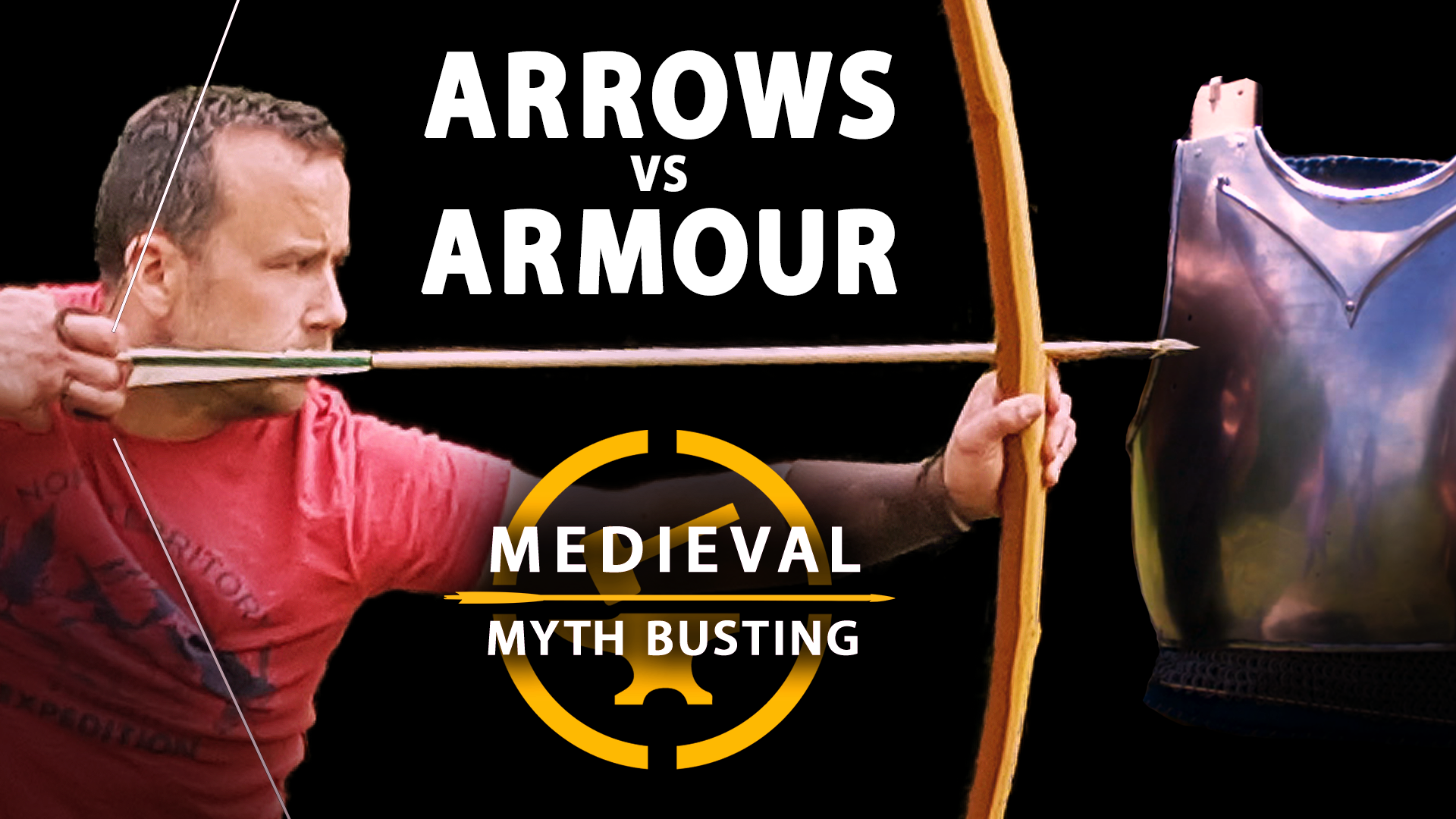
Introduction
The English longbow is laden with myth; of its origins, its power, its achievements. That and the centuries that have passed since it was used in earnest, means that the knowledge of what it was actually capable of doing has also passed. The captains and commanders that once knew its’ true power in physical and in military terms, are long dead. So in reality, all we have are a load of people, metaphorically sitting around and chatting about bows, arrows, armour and what might have been; hard fact is scarce and a good film documenting shooting at armour is overdue; this blog is documenting the making of such a film.
The “Arrows V’s Armour’ film tests the shooting of correctly made arrows, using a correct weight longbow at a correctly made piece of armour and the film was born from the need to find some solid and believable information. We chose Agincourt as a moment in time and we set out to answer the question “What did the longbows at Agincourt do to the French Knights?"
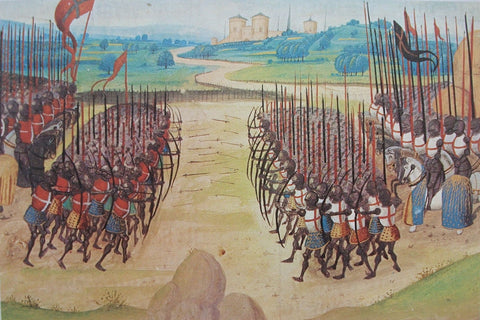
The Battle of Agincourt has been repeatedly visited by people interested in longbows for very good reason, partly for its semi-legendary status, military importance and the ‘victory against all odds’ storyline, but also because it is one of the few battles involving the longbow for which we have a relatively large amount of information. First hand accounts from both the French and English knights involved as well as contemporary artwork and the heralds’ accounts are all available to us, as are armour pieces contemporary to the time. The one glaring hole in what we have available for study are the longbows and the arrows; we have neither that are contemporary with the time and here we must resort to later resources and make the assumption that they are correct.
The Arrows V’s Armour film started small. My friend and editor Mike Chernett and I have been two of those many people “chatting about bows, arrows, armour and what might have been” for years; finally we took the plunge in late May ‘19 and contacted Will Sherman, Joe Gibbs, Kevin Legg, and Chrissi Carnie with the aim of putting together a film shoot of the artefacts in late June. A crazy short period to make such historically correct items. Once it looked like it would really happen, I called Dr Toby Capwell, he came on board, as did my professional camera operator friend Piers and his cameraman friend Rob and once the dust settled, it was clear the project had grown and it also became clear we require a part 2 and possibly a part 3 – watch this space!
The tests needed to be undertaken with accurately made equipment, set up in a representative manner, and this team was going to be able to deliver it, talk about it and film it, and there is no shame in admitting we were all excited.
Archer and bowyer
Joe Gibbs. As close as we can come to a medieval archer. Joe has been shooting a few times a week since he was 14 and has been shooting heavy bows from the start. He can draw and shoot a 200lbs longbow and shoots a 160lbs longbow (very accurately) for this film.
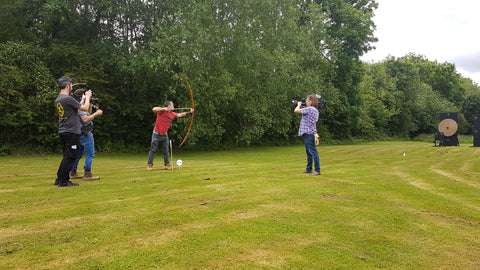
Fletcher
Will Sherman is a full time and very authentic fletcher. Will is a stunningly knowledgeable fletcher whose pursuit and practice of this knowledge is unsurpassed. Will provided authentic arrows with wrought iron heads.
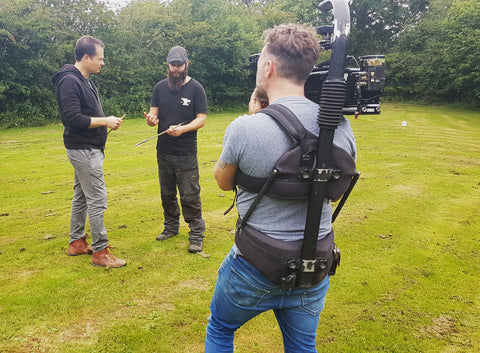
Armourer
Kevin Legg is a very talented and thorough armourer and metalwork conservator. Kevin has a deep understanding of his subject, but also chooses to work as much as he can in 14th and 15thC ways and is the only armourer I know who can make a variable thickness breastplate.
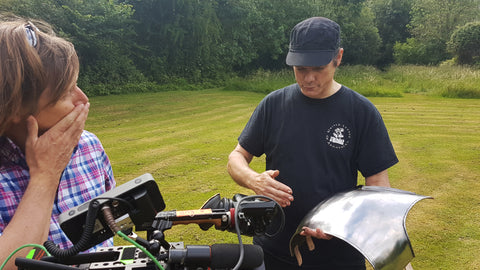
Fabric armour
Chrissi Carnie makes very, very accurate historical clothing. Chrissi can be depended on to absolutely get every last stitch and form correct and she provided the jupon panel in silk faced linen, stuffed with cotton fibre.

Historical context
Dr Tobias Capwell; Curator of Arms and Armour at the Wallace Collection, author and jouster. Toby clearly has an in depth knowledge of the history and artefacts of the time from an academic point of view, but also uniquely he is a practicing world class jouster.
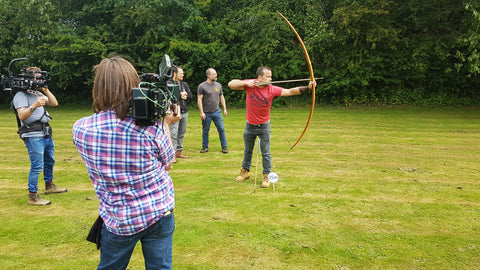
Stands and supports
It is also important to mount the breastplate in a manner that is a facsimile to the human body and the armour system of the time. The breast plate is mounted onto a wheeled stand that is free to move and has some sway to represent that of the body. On to this is mounted a ballistic gel torso fronted in a 5 layer arming doublet and a layer of riveted maille.
Testing
The first round of tests is to establish what the maximum power of the English Longbow actually is and how this reduces over distance shot. This is not strictly required for our test as we are going to shoot at 25m, but it helps us understand the spread of impact energies.
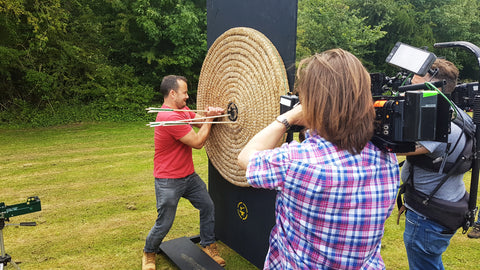
Joe shot the bow through a chronograph at 10, 25 and 50m and we got successful readings for 10 and 25m but even though Joe was able to shoot through the chronograph at 50m, for some reason it failed to register and we had to move on to the next filming sequence. We will revisit this in a later film.
With an 80g arrow this gave 123J at 10m and 109J at 25m. At 50m the arrows were still punching through the straw target and the 18mm strand board behind and the difference between 25m and 50 was not visible, so the energy will drop from 109J, but I suspect not that much and we will return to this aspect of the test in the future.
As a point of general interest, these numbers have a bearing on our day of testing. We know by interpreting the accounts from the day of the battle that the shooting was done ‘flat’, i.e. at a close range, but we don’t know how close, so a spread of data points would be useful to help with discussions, if not conclusions.

The next round was to mount the breastplate and secondary protection on to the mobile carriage and shoot it at 25m using a wrought iron arrow head. The first shot just skimmed under the breastplate and straight through the maille, arming doublet and gel; clearly showing the danger of getting shot in a vulnerable area.

Subsequent shots all shattered to various extents on the breastplate, marking and denting it in places, but there was clearly no chance they were going to pierce at all, and very definitely not enough to pass through and into a torso behind. It was clear though that debris was often driven upwards toward the neck.
A second round of shooting was undertaken using lightly case hardened heads. Case hardening in this context is an interesting issue and requires more research and practical application. Wrought iron is reasonably ductile and can be rendered much harder by introducing carbon to create a steel. This may have been done, but then analysing the existing heads would reveal they were made of steel and this has not been shown with bodkin “plate cutter” heads. Case hardening is when a thin jacket of very hard steel is created by soaking the wrought heads in a high carbon atmosphere at high temperatures for long periods. For example, if you mix organic materials like horn dust and charcoal, and fill a clay container with the mixture and some arrow heads, then seal the top and bake it at 800C for a few hours, a significant and very hard skin will be formed on the iron.
This is contentious because it was cheap and they did it for other objects, but the high carbon steel skin is very thin and would (inevitably?) rust away in a battlefield context, leaving no trace it was ever done. One of the very few clues we have is that under a list compiled in Mildenhall’s second account, for 1351–3, “649 sheaves of arrows with steeled heads (cum capitibus asteratis),“
These arrows are specifically described as steeled. Quite what this means is unclear, but I suspect it means they were hardened or possibly made completely from steel.
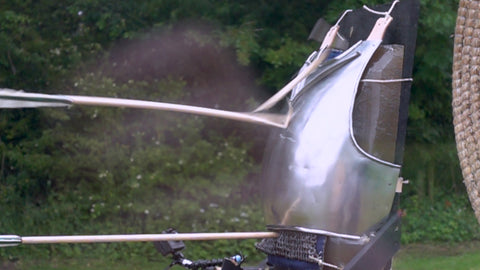
A second round of testing was then conducted using hardened heads and to all intents the effect was the same that the arrows completely shattered, marked the plate or dented it, but did not come close to passing through, though again send debris upward.
These tests were limited in that only 3 arrows of each type were shot and so in a ‘scientific’ sense the sample size is too small to draw absolute conclusions and that is a fair critique, but from observing what we could I feel it is fair to say “an arrow of true weight and construction, shot from a traditional bow of a powerful weight will not pass through a correctly fashioned breast plate of moderate quality”.
Being familiar with engineering, armour, projectiles and longbows, I cannot say this was a surprise, however the amount and direction of debris was very interesting as well as the shot into the ‘belly’ and leads to the conclusion that strikes through the breastplate would not be dangerous to the wearer, but the ‘lucky shots’ and the debris could well be. The role of the ‘stop bar’ was quite clear at this point.
A few aspects are striking about this. Firstly, it would not be sensible for a shooter to shoot at hard targets when soft are available and Joe clearly shows you can shoot these bows with accuracy. Secondly Paul Dolnsteins’ drawing of Swedish peasants shooting at a German army in 1501 shows every individual who is shot, shot in the arm, leg or face.

The last, is that the accounts from the French knights who were at Agincourt said “they were feared for the sights and the breathes of their helms’. No mention of anything else and we can conclude that if they were scared of these areas of their armour they were either vulnerable or perceived to be so.
This will require at least two more visits to this area; ‘lucky shots’ and helmets.
The final round of authentic testing was looking at the role of the Jupon. These were heavily padded fabric armour worn over the plate and in addition to the arming doublet and the maille. They were worn by some English knights, but were far more common amongst the French; fashion or function?
A section of fabric jupon was fitted over the plate and shot again with three arrows at 25m. Where previously 5 arrows of the six shattered massively, all three into the jupon broke at the head and the shaft was left intact. This had the singular effect of reducing flying debris to nothing.

The final test was conducted as a comparison using a modern heavy arrow of a similar weight, but using an all steel medium carbon head at around 52-54 Rockwell, shot by the same bow at 10m to give it every chance of penetrating. It marked the plate more heavily than the wrought heads of either type, but again failed to puncture at all.
Many thanks must go out to all those who gave up their time and considerable effort for this project and who were willing to be involved in what proved to be a very interesting day, and I suspect the first of a few similar ones.
Thanks to experts and participants
- Kevin Legg for the breastplate
- Will Sherman for the arrows
- Joe Gibbs for the bow and the shooting
- Chrissi Carnie for the Jupon
- Mike Chernett for directing, camera work and editing
- Dr Toby Capwell for knowledge and insights
- Piers Leigh for camera work
- Rob Bennett for camera work
- Lou, Lisa and Greg for running and catering
Specification of artefacts
Archer and bowyer
Joe Gibbs has been shooting since he was 14 and effectively grown up with the longbow. He shoots a few times a week and it is clear he shoots a 160lbs in a very casual, yet accurate manner. We can only imagine he would be on a par with a competent medieval archer.
Unfortunately, there are no existing longbows that we can base our bow on, so the closest longbows in time are from the Mary Rose ship, which sank in 1545. Clearly this is much later than the battle of Agincourt, but we are fairly sure the bows themselves have not significantly changed much over this period.
Longbow is made from Swiss mountain yew and weighs 160lbs
Arrows
Fletched by Will Sherman of www.medievalarrows.co.uk We have the same problems here in that there are no existing arrows from this period and the only war arrows we know of close to this date are also The Mary Rose ones, albeit fitted with 1406 heads for these tests.
Will is a very accomplished fletcher and arrowsmith who really strives to get every detail right, so these have wrought iron heads based on accession number 7568 from the Museum of London, some case hardened and some wrought iron. The fletches are swan in this case, but goose would be more common, but are set into a compound of beeswax, fat and Verdigris as the Mary Rose arrows were, rather than glue as you may expect.
- Shafts were black poplar or ash
- Heads were wrought iron, some case hardened, so not
- Fletches were swan
- Adhesive is beeswax, kidney fat and verdigris
- Whipping is silk
Breastplate
Raised by Kevin Legg of www.plessisarmouries.co.uk. We based the breastplate on a number 14 from the Churburg Armoury and it is dated to 1390. Fortunately we know enough about this piece to make a good reproduction of it as we have dimensions and weight, but also the material, carbon content, thickness and heat treatment method.
- Thickness at centre chest 2.5mm
- Thickness at sides and over the shoulders 1.5mm
- Material is homogenous 0.5% carbon steel, heated and air cooled
Jupon
The sample was made by Chrissi Carnie of www.thesempster.co.uk and is based very closely on the garment made for Charles VI of France and dated to the late 14thC. Constructed from two layers of linen stuffed with raw cotton fibre to create stuffed tubes, then second panel of the same construction is laid over but not sewn together except at the seams, with the top panel additionally having a covering of silk. This makes a garment of 5 layers of fabric and two layers of stuffing.
Learn more
Find out more about the battle, the armour and the arrows in these companion films.
Resources
- Mary Rose Trust https://maryrose.org
- The Wallace Collection https://www.wallacecollection.org
- Museum of London https://www.museumoflondon.org.uk/museum-london
- Azincourt Museum (Agincourt) https://www.tripadvisor.co.uk/Attraction_Review-g804483-d797237-Reviews-Centre_Historique_Medieval_Azincourt-Azincourt_Pas_de_Calais_Hauts_de_France.html
- Churburg Armoury http://www.hansprunner-estore.com/portfolio-items/the-churburg-armoury/
- Alan Williams - The Knight and the Blast Furnace https://www.amazon.co.uk/Knight-Blast-Furnace-History-Metallurgy/dp/9004124985
- Dr Tobias Capwell, Armour of the English Knight https://www.amazon.co.uk/Armour-English-Knight-1400-1450-2015/dp/0993324606/ref=sr_1_2keywords=capwell+tobias&qid=1565003503&s=books&sr=1-2
- Jupon of Charles VI https://www.academia.edu/5610708/The_Tailoring_of_the_Pourpoint_of_King_Charles_VI_of_France_Revealed
- For opening my mind to all of this and fantastic general information http://myarmoury.com/home.php
Image Credits
- Antoine Leduc, Sylvie Leluc et Olivier Renaudeau (dir.), D'Azincourt à Marignan. Chevaliers et bombardes, 1515-1515, Paris, Gallimard / Musée de l'armée, 2015, p. 18-19,
Scene from the begin of the Dano-Swedish war (1501-1512), Danish and German mercenaries are fighting against rebellious Swedish peasant's forces - Paul Dolnstein - Paul Dolnstein's diary, State Archives of Weimar in Germany
Also in Tod's Blog
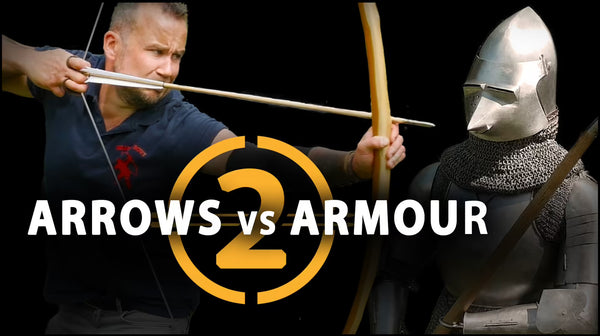
Arrows vs Armour 2 - The second set of Mythbusting films. SEE US LIVE AT CHALKE VALLEY HISTORY FESTIVAL, UK- 1ST JULY 10.30AM
